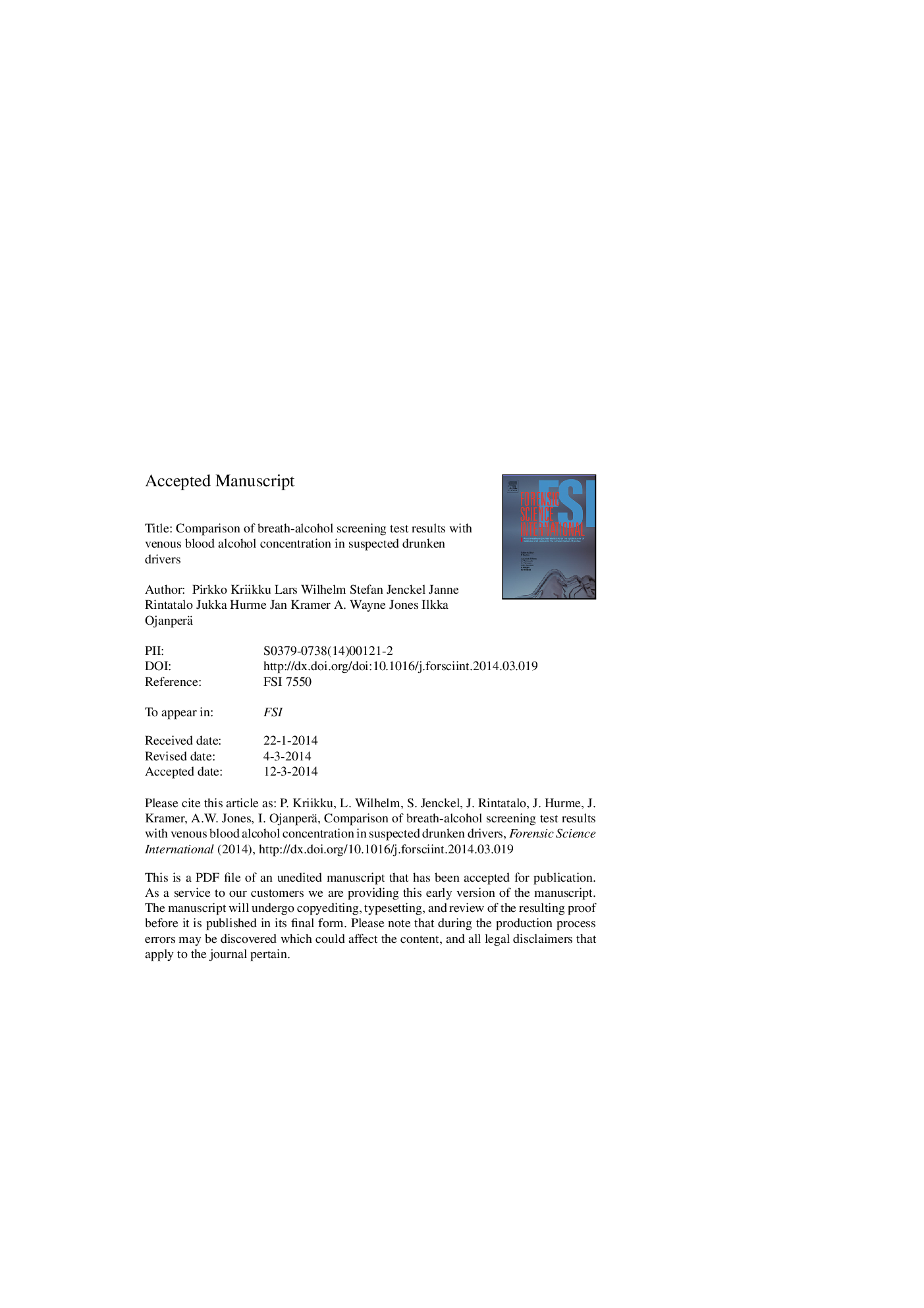| کد مقاله | کد نشریه | سال انتشار | مقاله انگلیسی | نسخه تمام متن |
|---|---|---|---|---|
| 6552562 | 160436 | 2014 | 23 صفحه PDF | دانلود رایگان |
عنوان انگلیسی مقاله ISI
Comparison of breath-alcohol screening test results with venous blood alcohol concentration in suspected drunken drivers
ترجمه فارسی عنوان
مقایسه نتایج آزمون غربالگری تنفس و الکل با غلظت الکل خون وریدی در رانندگان مشکوک به مست
دانلود مقاله + سفارش ترجمه
دانلود مقاله ISI انگلیسی
رایگان برای ایرانیان
کلمات کلیدی
الکل، رانندگی، خون، نفس، غربالگری در کنار جاده، ایمنی ترافیک،
موضوعات مرتبط
مهندسی و علوم پایه
شیمی
شیمی آنالیزی یا شیمی تجزیه
چکیده انگلیسی
Hand-held electronic breath-alcohol analyzers are widely used by police authorities in their efforts to detect drunken drivers and to improve road-traffic safety. Over a three month period, the results of roadside breath-alcohol tests of drivers apprehended in Finland were compared with venous blood alcohol concentration (BAC). The mean (median) time between sampling blood and breath was 0.71 h (0.58 h) with a range from 0 to 6 h. Some hand-held instruments gave results as the concentration of alcohol in breath and were converted into BAC assuming a blood-breath alcohol ratio (BBR) of 2260. The mean venous BAC (1.82 g/kg) in traffic offenders was higher than the result predicted by the hand-held breath analyzers (1.72 g/kg). In 1875 roadside tests, the relationship between venous BAC (x) and BrAC (y) was defined by the regression equation y = 0.18 + 0.85x. The coefficients show both a constant bias (y-intercept 0.18 g/kg) and a proportional bias (slope = 0.85). The residual standard deviation (SD), an indicator of random variation, was ±0.40 g/kg. After BAC results were corrected for the time elapsed between sampling blood and breath, the y-intercept decreased to 0.10 g/kg and 0.004 g/kg, respectively, when low (0.1 g/kg/h) and high (0.25 g/kg/h) rates of alcohol elimination were used. The proportional bias of 0.85 shows that the breath-alcohol test result reads lower than the actual BAC by 15% on average. This suggests that the BBR of 2260 used for calibration should be increased by about 15% to give closer agreement between BAC and BrAC. Because of the large random variation (SD ± 0.40 g/kg), there is considerable uncertainty if and when results from the roadside screening test are used to estimate venous BAC. The roadside breath-alcohol screening instruments worked well for the purpose of selecting drivers above the statutory limit of 0.50 g/kg.
ناشر
Database: Elsevier - ScienceDirect (ساینس دایرکت)
Journal: Forensic Science International - Volume 239, June 2014, Pages 57-61
Journal: Forensic Science International - Volume 239, June 2014, Pages 57-61
نویسندگان
Pirkko Kriikku, Lars Wilhelm, Stefan Jenckel, Janne Rintatalo, Jukka Hurme, Jan Kramer, A. Wayne Jones, Ilkka Ojanperä,
